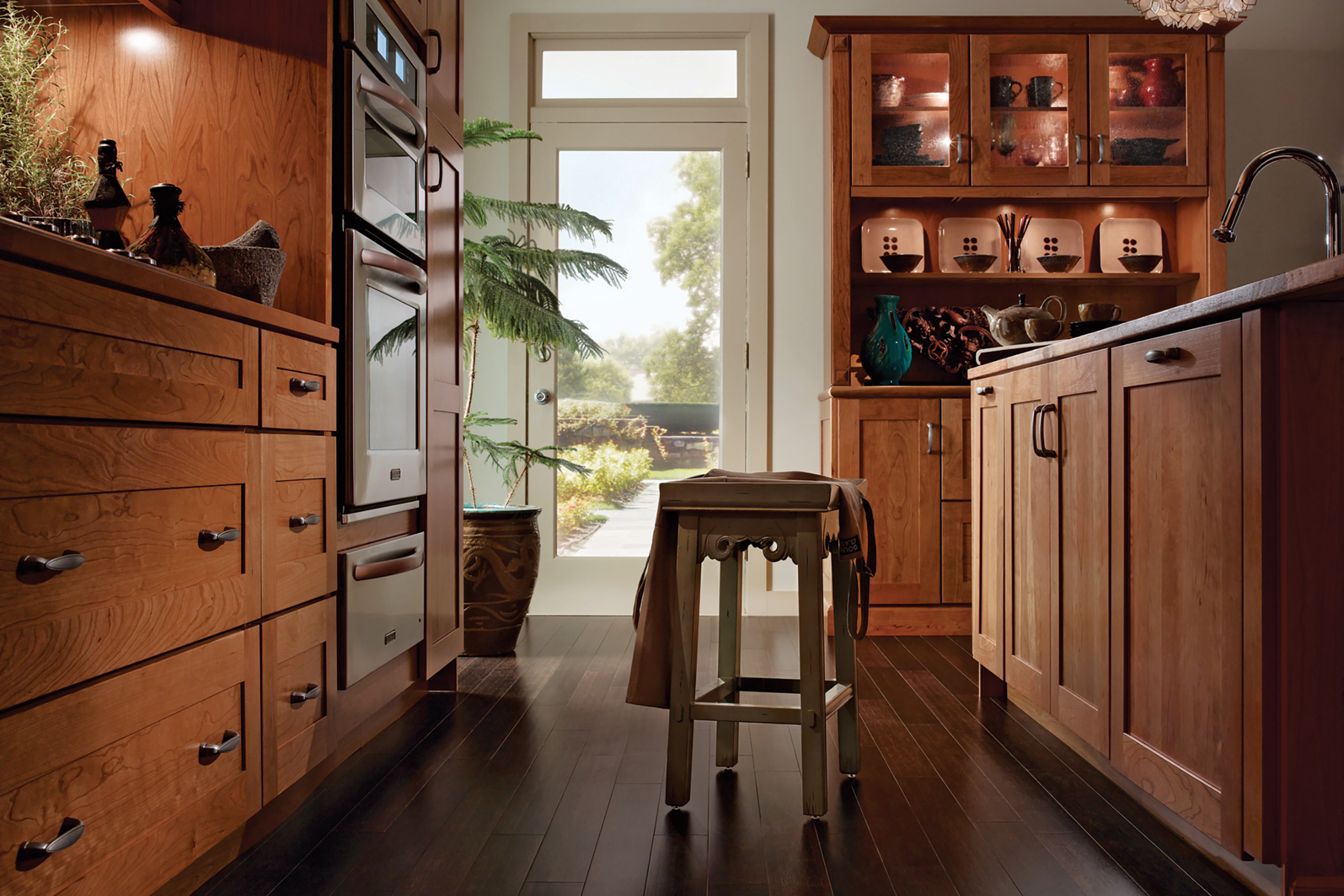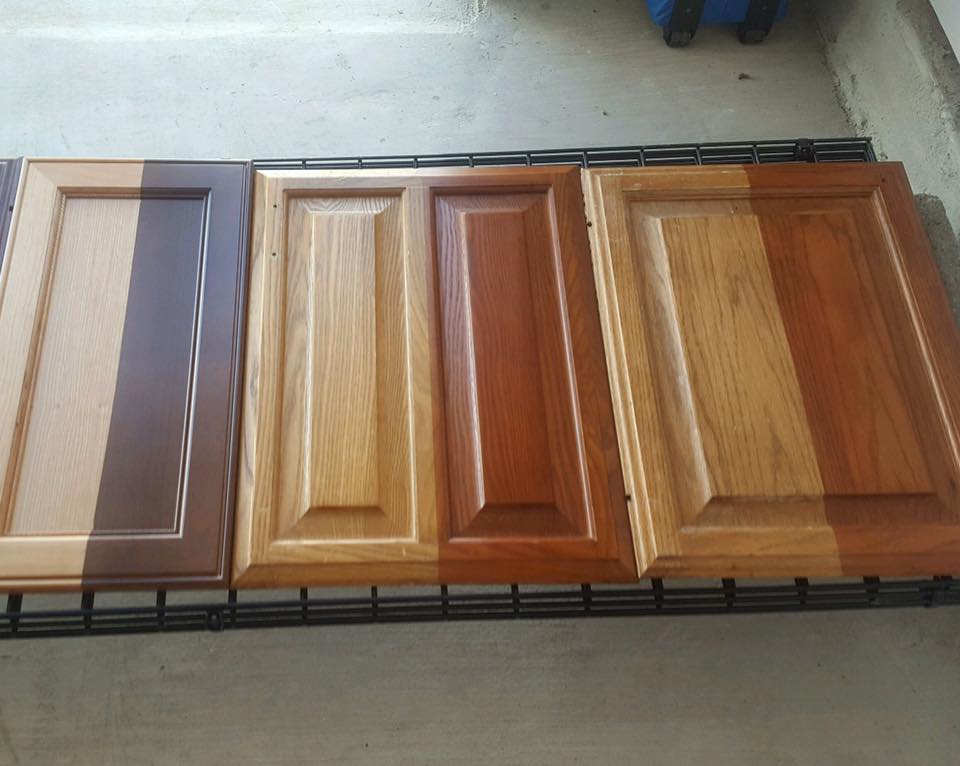Popular Wood Cabinet Stain Colors

Choosing the right stain color for your cabinets can dramatically impact the overall look and feel of your kitchen or bathroom. With a wide range of shades available, it can be overwhelming to decide which color best complements your space and personal style. This guide will explore the top 10 most popular wood cabinet stain colors, discussing their versatility, aesthetic appeal, and historical significance.
Popularity of Wood Cabinet Stain Colors
The popularity of certain wood cabinet stain colors is influenced by several factors, including:
- Versatility: Some colors are highly versatile and can work well in various design styles and with different wood species.
- Aesthetic Appeal: Certain colors create specific moods and ambiance, making them popular choices for different design preferences.
- Historical Significance: Some colors have a rich history and have been associated with particular periods or styles, contributing to their enduring appeal.
Top 10 Most Popular Wood Cabinet Stain Colors
Here are the top 10 most popular wood cabinet stain colors, along with insights into their popularity and complementary wood species:
- Early American: This warm, reddish-brown stain is a classic choice for creating a traditional and timeless look. Its popularity stems from its versatility, as it complements a wide range of wood species, including oak, maple, and cherry. It’s often used in kitchens with a farmhouse or cottage style, creating a cozy and inviting ambiance.
- Espresso: A rich, dark brown stain that evokes a sense of sophistication and elegance. Its popularity is due to its ability to create a dramatic and modern look, particularly when used with darker wood species like walnut or mahogany. Espresso stains are often found in contemporary kitchens and bathrooms, adding a touch of luxury and depth to the space.
- Honey: A light, warm brown stain that creates a bright and airy feel. It’s popular for its versatility, as it can work well with both light and dark wood species, including maple, pine, and birch. Honey stains are often used in kitchens with a Scandinavian or minimalist style, adding a touch of warmth and natural beauty.
- Natural: A clear or very light stain that enhances the natural grain and color of the wood without significantly altering its appearance. Its popularity is due to its ability to create a clean and modern look, particularly when used with light wood species like maple or ash. Natural stains are often used in kitchens with a contemporary or minimalist style, allowing the beauty of the wood to shine through.
- Red Mahogany: A deep, reddish-brown stain that creates a rich and luxurious look. Its popularity stems from its historical significance, as it was commonly used in traditional furniture and cabinetry. Red mahogany stains are often used in kitchens with a classic or traditional style, adding a touch of elegance and warmth.
- Jacobean: A dark, rich brown stain with a slightly reddish hue. Its popularity is due to its ability to create a dramatic and sophisticated look, particularly when used with darker wood species like walnut or cherry. Jacobean stains are often found in kitchens with a traditional or transitional style, adding a touch of depth and character.
- Weathered Oak: A grayed-out brown stain that creates a rustic and aged look. Its popularity stems from its ability to create a warm and inviting ambiance, particularly when used with oak or hickory. Weathered oak stains are often used in kitchens with a farmhouse or cottage style, adding a touch of character and charm.
- Gray: A cool and contemporary stain that creates a sleek and modern look. Its popularity is due to its versatility, as it can work well with various wood species, including oak, maple, and cherry. Gray stains are often used in kitchens with a minimalist or Scandinavian style, adding a touch of sophistication and elegance.
- White Wash: A light, translucent stain that creates a distressed and vintage look. Its popularity stems from its ability to create a bright and airy feel, particularly when used with light wood species like pine or birch. White wash stains are often used in kitchens with a farmhouse or cottage style, adding a touch of charm and character.
- Black: A bold and dramatic stain that creates a modern and edgy look. Its popularity is due to its ability to create a statement piece, particularly when used with darker wood species like walnut or mahogany. Black stains are often used in kitchens with a contemporary or industrial style, adding a touch of sophistication and intrigue.
Factors to Consider When Choosing Stain Colors

Selecting the right stain color for your wood cabinets is a crucial decision that can significantly impact the overall aesthetic of your kitchen or bathroom. Choosing the perfect stain color involves considering various factors that can influence how the color appears in your space.
Natural Light Impact on Stain Color Appearance, Wood cabinet stain colors
Natural light plays a significant role in how stain colors appear. The amount and type of natural light in your space can drastically alter the perceived color of the stain. Sunlight, for example, tends to make colors appear warmer and brighter, while north-facing windows with less direct sunlight can make colors appear cooler and more muted. Therefore, it is essential to consider the natural light conditions in your space when choosing a stain color.
Undertones and Their Influence on Overall Color Scheme
Undertones are subtle hints of color that are present in every stain. They can significantly influence the overall color scheme of your space and can make a big difference in how the stain blends with other elements in the room. For example, a stain with warm undertones, such as red or yellow, will create a cozy and inviting atmosphere. In contrast, a stain with cool undertones, such as blue or green, will create a more modern and sophisticated look. It is important to choose a stain with undertones that complement the overall color scheme of your space.
Choosing Stain Colors That Complement Surrounding Decor
When choosing a stain color, it is essential to consider how it will complement the surrounding decor. The stain color should blend harmoniously with the countertop, backsplash, and other elements in the room. For example, a light-colored stain can create a sense of spaciousness in a small kitchen, while a darker stain can add warmth and depth to a larger room. It is also important to consider the style of your home when choosing a stain color. A traditional home might benefit from a warm and rich stain, while a modern home might look better with a cooler and more contemporary stain.
Stain Color Trends and Innovations

The world of wood cabinet stain colors is constantly evolving, driven by shifts in design aesthetics, technological advancements, and the growing desire for personalized spaces. These trends are not just about changing hues; they reflect a deeper desire for individuality, sustainability, and a connection with nature.
Emerging Trends in Wood Cabinet Stain Colors
The emergence of new stain color trends is often influenced by broader design movements and cultural shifts.
- Warm Neutrals: Warm neutrals like beige, taupe, and cream are gaining popularity, offering a sense of tranquility and sophistication. These colors create a welcoming atmosphere and complement a wide range of interior styles.
- Earthy Tones: Inspired by nature, earthy tones like terracotta, olive green, and deep browns are making a comeback. These colors evoke a sense of grounding and connection to the natural world, creating a cozy and inviting ambiance.
- Bold Colors: For those seeking a more dramatic look, bold colors like navy blue, emerald green, and deep burgundy are becoming increasingly popular. These colors add a touch of personality and sophistication to any space.
- Black and White: Black and white are classic choices that offer timeless elegance. Black cabinets can create a dramatic and sophisticated look, while white cabinets provide a clean and airy feel.
The Use of New Technology and Techniques in Stain Application
Advancements in technology have revolutionized the way wood cabinet stains are applied, leading to more precise and consistent results.
- Spray Application: Spray application techniques offer greater control over the stain application process, resulting in even coverage and a smooth finish. This method is particularly effective for large-scale projects and achieving intricate designs.
- Airless Sprayers: Airless sprayers use high pressure to atomize the stain, creating a fine mist that ensures even coverage and minimizes overspray. This technique is ideal for achieving a consistent finish on large surfaces.
- Automated Staining Systems: Automated staining systems are gaining popularity for their efficiency and precision. These systems utilize robotic arms to apply stain evenly and consistently, reducing the risk of human error and ensuring a high-quality finish.
Growing Popularity of Custom Stain Blends and Unique Color Combinations
The desire for personalization is driving a growing trend toward custom stain blends and unique color combinations.
- Custom Blending: Stain manufacturers are offering a wider range of colorants and pigments, allowing homeowners and designers to create custom blends that perfectly match their desired aesthetic.
- Unique Color Combinations: The use of multiple stain colors on a single cabinet is becoming increasingly popular, creating visually interesting and unique designs. This technique allows for the creation of intricate patterns and color gradients, adding depth and dimension to the cabinets.
Wood cabinet stain colors – Choosing the right wood cabinet stain color can really make or break a room’s vibe. For example, if you’re going for a soft, tranquil atmosphere like in a dusty pink grey and white bedroom , you might want to lean towards a light, warm stain that complements the delicate tones.
A slightly grayed-out stain can also work well to create a cohesive and calming effect.
Choosing the right wood cabinet stain color can really set the tone for your bathroom. You can go for a classic, warm look with a walnut stain, or maybe something more modern and sleek with a dark gray. If you’re looking to ditch the mirror and create a more unique space, consider a non mirrored bathroom cabinet.
These cabinets often come in a variety of materials and finishes, allowing you to experiment with different stain colors and create a truly personal style. Whatever your preference, remember that the right stain can make your bathroom cabinets the focal point of the room.
